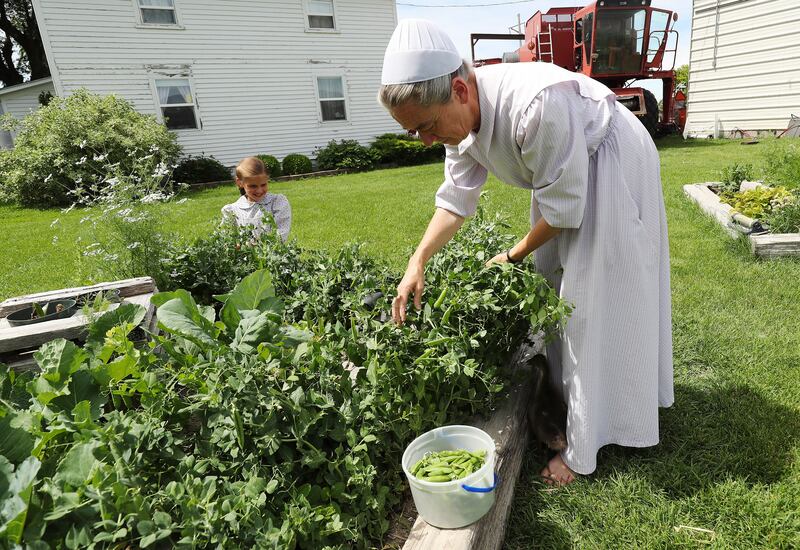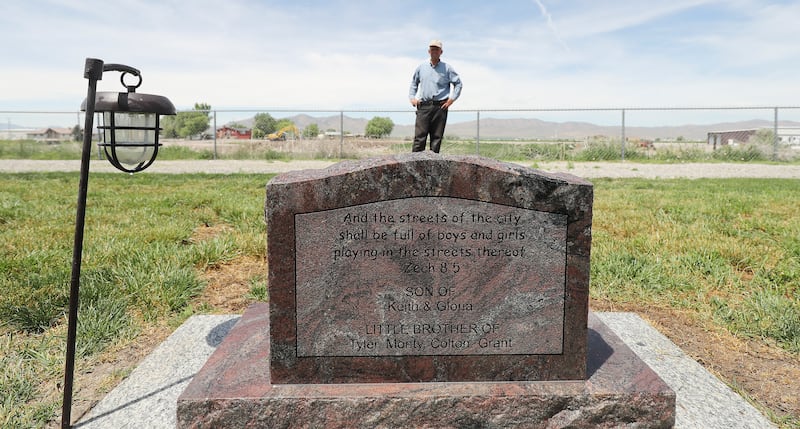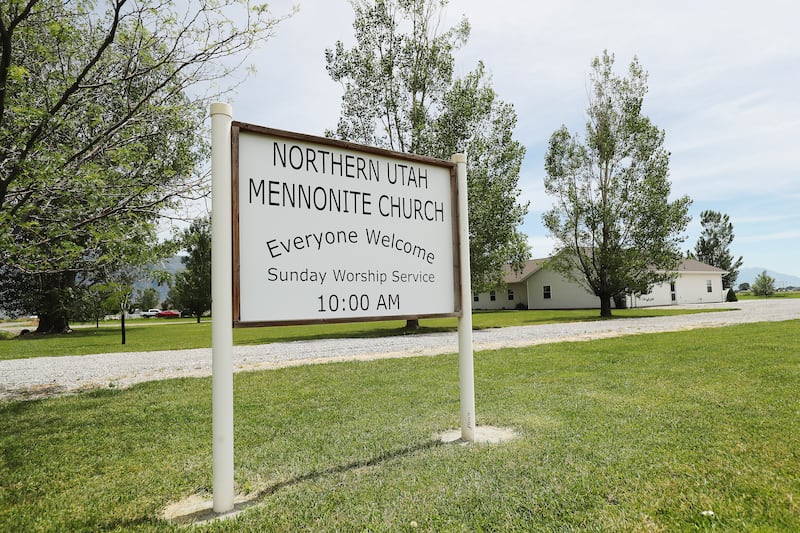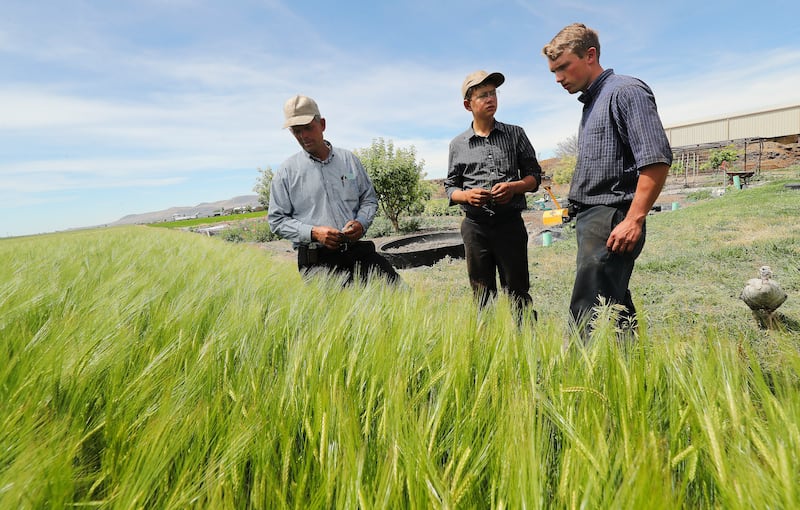TREMONTON — During the COVID-19 spring quarantine, farmer and Bishop Nathan Hege, of the Northern Utah Mennonite Church, sat at his home computer and became the editor of a weekly publication called Corona Times.
With Sunday worship services canceled and church members unable to gather, the bishop worried that some in his flock, especially younger families with fewer children, felt isolated and lonely.
The congregation rallied around the newsletter, which continued for five weeks. Fun family reports, colorful photos, children’s activity pages, music, inspirational thoughts, prayer requests, birthday and anniversary announcements and other information grew to fill 16 pages of the April 26 edition. Copies of Corona Times were printed and passed around while others were distributed via email.
The creative project cultivated unity among church members and nurtured hope for better days to come during the COVID-19 pandemic.
“It (the newsletter) was a real bright spot,” Bishop Hege said. “I think the biggest soul-stretcher has been not having our regular church. That’s been the biggest upheaval in our community, what it’s done to church and school.”











The success of Corona Times was just one story the bishop shared while discussing life during the pandemic, the Mennonite Christian faith and other observations.
The Northern Utah Mennonite Church started in Tremonton more than two decades ago with six families. Now there are about 15 families and 50 members. It is one of two Mennonite congregations in Utah. The other is the Living Water Mennonite Church and Christian Ministry in Utah County. Another congregation recently started up in Preston, Idaho, he said.
There are approximately 2 million members of the Mennonite Church worldwide, with nearly 80,000 in the United States. Mennonites are Christians, Anabaptists (they believe in the validity of adult baptism only) and the name stems from an early leader named Menno Simons, a Catholic priest who aligned himself with the Anabaptists in 1536, according to mennoniteusa.org.
One misconception about Mennonites is they are a closed community.
“Our lives are not in the mainstream,” Bishop Hege said. “But our church doors are open for services and our membership is open. We welcome others to join.”
Another misunderstanding is that Mennonites are Amish. While they share some traditions, values and doctrinal teachings, there are significant differences, such as Mennonites using more modern conveniences.
Mennonite congregations are not administratively connected through a central office. When a congregation experiences growth, sometimes a small group of families will move away to form a congregation in a new community.
In 1997, the Hege family and others moved from Farmington, New Mexico, to Utah because there was a Mennonite sister in Clearfield without a church. A congregation was organized with Hege as the bishop. He’s continued to serve in that role for the past 23 years.
How long does a Mennonite bishop typically serve?
“Typically as long as they are faithful, willing and able,” Bishop Hege said with a smile. “I’m in my 50s. I keep thinking, you know, we should get a younger helper around here sometime.”
The Hege farm is like most in northern Utah with plenty of activity on a warm summer day. There are cows and pigs to feed, a garden to tend and crops to soon harvest.
In the yard, 9-year-old Maeyken Hege picks peas with neighbor Lydia Martin while a gosling, two turkeys and Bozo the farm dog wander nearby.

The Heges have 10 children and one foster daughter. Five of the children are married, but enough still live on the farm to assist with the daily chores. Lavern Mast, a son-in-law, and 13-year-old Adrian Hege have been working on a major repair to the family’s combine harvester.
At the center of their lives is their faith in God, as evidenced by a sign attached to their mailbox post. One side displays the words of Jesus Christ as found in Luke 12:34, “Where your treasure is, there will your heart be.” The other side shows another verse from Luke, “Hear the word of God and do it.”

Theirs is a “Christian faith that is put into shoe leather,” the bishop said.
“Our burden is to point people to Christ,” he said. “Believing is core, but for us, our faith is so much in following Christ. We’re going to follow him the best we can.”
Bishop Hege has relied on his faith for strength during these challenging times. When asked to share the most interesting or memorable moment he’s faced in recent months, he said he wasn’t that surprised by the spread of the novel coronavirus and the accompanying restrictions because of biblical prophecies about the last days.
“In the light of those prophecies, COVID-19 seems mild,” he said. “What did impress me heavily various times during these restrictions was the weight of novel responsibilities. I would commit to providing something for our congregation, then, after doing it for several weeks, reality would sink in and keeping on indefinitely looked huge. But I could find peace in trusting God for grace a day at a time and letting the unknown future with him. He is bringing us through.”

Down the road a mile or so from the Hege farm is a small cemetery. Members of the Northern Utah Mennonite Church have started maintaining the old cemetery because they have two members buried there. One is Judith Ann Dent, the Mennonite sister from Clearfield who died of cancer in 2003.
As Bishop Hege walked past her grave, he said he doesn’t fear death by COVID-19 because of his firm belief in life “beyond the grave.”
“The real life is after this life. If I get COVID and die, it’s not the end of the world. I mean it’s the end of my life here, but it’s not like it has to be avoided at all costs,” he said. “We’re going to have to live life and life is dangerous. We want to be realistic and keep the threat in perspective ... but our hope is beyond the grave.”
The Northern Utah Mennonite Church has started gathering on Wednesday evenings for a brief time of prayer while respecting all safety guidelines. The members wish to return to the fellowship and support of communion and Sunday worship services, but they also believe in being good citizens that follow the rules.

“So we see a need just to find our way,” Bishop Hege said. “And I think we can.”
Despite the difficulties and challenges of this time, the bishop believes that one day people will reflect on this period with many good memories and recognize the Lord’s blessings.
“The Lord can take us through without things being what we thought were normal,” he said. “When some of our routines and structure falls away, it actually helps us to get to see what the basics really are, and maybe some of the routine details aren’t as important as we thought they were. And so we say it’s good, we’d like to have it back, but we don’t have to have that to make it through. We can survive.”


 alt=Trent Toone
alt=Trent Toone








